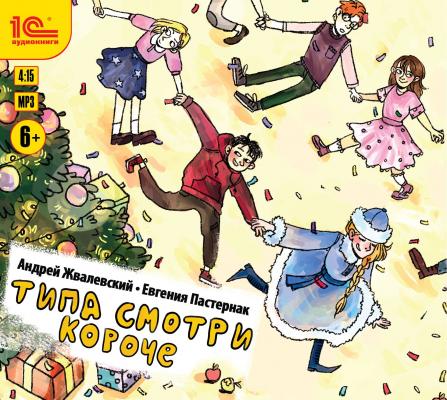Типа смотри короче (сборник). Евгения Пастернак
Читать онлайн.| Название | Типа смотри короче (сборник) |
|---|---|
| Автор произведения | Евгения Пастернак |
| Жанр | Детская проза |
| Серия | Время – детство! |
| Издательство | Детская проза |
| Год выпуска | 2013 |
| isbn |
7
В качестве примера подобных исследований можно привести работы ученых, представленные в следующих сборниках: Russian Masculinities in History and Culture / Eds. B. Clements, R. Friedman, D. Heley. Basingstoke, 2001; и О муже(n)ственности: Сб. статей / Сост. С. Ушакин. М., 2002. См. также: Kukhterin S. Fathers and Patriarchs in Communist and Post-Communist Russia // Gender, State and Society in Soviet and Post-Soviet Russia / Ed. S. Ashwin. London, 2000. Р. 71–89; Healey D. Homosexual Desire in Revolutionary Russia: The Regulation of Sexual and Gender Dissent. London, 2001; Edele М. Strange Young Men in Stalin’s Moscow: The Birth and Life of the Stiliagi, 1945–1953 // Jahrbücher für Geschichte Osteuropas. 2002. № 50. Р. 37–61; Тартаковская И. Н. Несостоявшаяся маскулинность как тип поведения на рынке труда // Гендерные отношения в современной России: исследования 1990-х годов: Сб. научных статей. Самара, 2003. С. 42–71; Чернова Ж. Мужская работа: анализ медиарепрезентации // Гендерные отношения в современной России: Исследования 1990-х годов: Сб. научных статей. Самара, 2003. С. 276–294; Хасбулатова О. Российская гендерная политика в ХХ столетии: мифы и реалии. Иваново, 2005; Prokhorova Е. The Post-Utopian Body Politic: Masculinity and the Crisis of National Identity in Brezhnev-Era TV Miniseries // Gender and National Identity in Twentieth-Century Russian Culture. DeKalb, 2006. P. 131–150; Field D. Private Life and Communist Morality in Khrushchev’s Russia. New York, 2007; Bucher G. Stalinist Families: Motherhood, Fatherhood and Building the New Soviet Person // The Making of Russian History: Society, Culture, and the Politics of Modern Russia. Bloomington, 2009. P. 129–152; Pollock E. Real Men Go to the Bania: Postwar Soviet Masculinities and the Bathhouse // Kritika: Explorations in Russian and Eurasian History. 2010. № 1. Р. 47–76; Bureychak T. Masculinity in Soviet and Post-Soviet Ukraine: Models and Their Implications // Gender, Politics, and Society in Ukraine. Toronto, 2012. P. 325–361; Лебина Н. Мужчина и женщина: тело, мода, культура. СССР – оттепель. М., 2014. Более всего категория маскулинности осмыслялась в кино. См. об этом, например: Haynes J. How the Soviet Man Was Unmade: Cultural Fantasy and Male Subjectivity under Stalin. Pittsburgh, 2008; Cinepaternity: Fathers and Sons in Soviet and Post-Soviet Film / Eds. H. Goscilo, Y. Hashamova. Bloomington, 2010.
8
О досоветском идеале Нового человека в российском контексте см. сочинения Чернышевского, Добролюбова и Писарева, например: Добролюбов Н. А. Органическое развитие человека в связи с его умственной и нравственной деятельностью // Добролюбов Н. А. Избранные философские сочинения. М., 1945. Т. 1. Чернышевский Н. Г. Общий характер элементов, производящих прогресс // Чернышевский Н. Г. Сочинения. Т. 2. М., 1987. C. 599–623. См. также: Паперно И. Семиотика поведения: Николай Чернышевский – человек эпохи реализма. М., 1996; Rosenthal B. G. Dmitry Sergeevich Merezhkovsky and the Silver Age: The Development of a Revolutionary Mentality. The Hague, 1975; Rosenthal B. G. Nietzsche in Russia. Princeton, 1986; Scherr B. P. God-Building or God-Seeking? Gorky’s Confession as Confession // The Slavic and East European Journal. 2000. № 44. Р. 448–469; Clowes E. The Revolution of Moral Consciousness: Nietzsche in Russian Literature, 1890–1914. DeKalb, 1988; Weiner D. Man of Plastic: Gor’kii’s Visions of Humans in Nature // The Soviet and Post-Soviet Review. 1995. № 22. P. 65–88; Garrard J. The Original Manuscript of Forever Flowing: Grossman’s Autopsy of the New Soviet Man // The Slavic and East European Journal. 1994. Vol. 38. № 2. Р. 271–289; Hellbeck J. Laboratories of the Soviet Self: Diaries from the Stalin Era. Ann Arbor, 2003; Etkind А. Psychological // Culture Russian Culture at the Crossroads: Paradoxes of Postcommunist Consciousness. Oxford, 1996. P. 99–127.
9
Evans Clements B. Introduction // Russian Masculinities in History and Culture. P. 1–2.
10
Connell R. W. The Big Picture: Masculinities in Recent World History // Theory and Society. 1993. № 22. Р. 611.
11
Цит. по: Bailes K. E. Alexei Gastev and the Soviet Controversy over Taylorism, 1918–24 // Soviet Studies. 1977. Vol. 29. № 3. P. 387.
12
Замятин Е. И. Мы // Замятин Е. И. Собр. соч.: В 5 т. М., 2003. Т. 2. С. 218.
13
Boscagli M. Eye on the Flesh: Fashions of Masculinity in the Early Twentieth Century. Boulder, 1996. P. 129.
14
Ibid.
15
Тема физического здоровья и физической культуры, имеющая отношение к представлениям о маскулинности, рассматривается в: Gilmour J., Clements B. ‘If You Want to Be Like Me, Train!’ The Contradictions of Soviet Masculinity // Russian Masculinities in History and Culture. P. 210–222; Starks Т. The Body Soviet: Propaganda, Hygiene, and the Revolutionary State. Madison, 2008; Grant S. Physical Culture and Sport in Soviet Society: Propaganda, Acculturation and Transformation in the 1920s and 1930s. London, 2014.
16
Schrand T. Socialism in One Gender: Masculine Values in the Stalin Revolution // Russian Masculinities in History and Culture. P. 203.
17
Более подробно о взаимосвязи между милитаризмом, героизмом и чествованиями см.: Petrone К. Life Has Become More Joyous, Comrades: Celebrations in the Time of Stalin. Bloomington, 2000.
18
Clark
